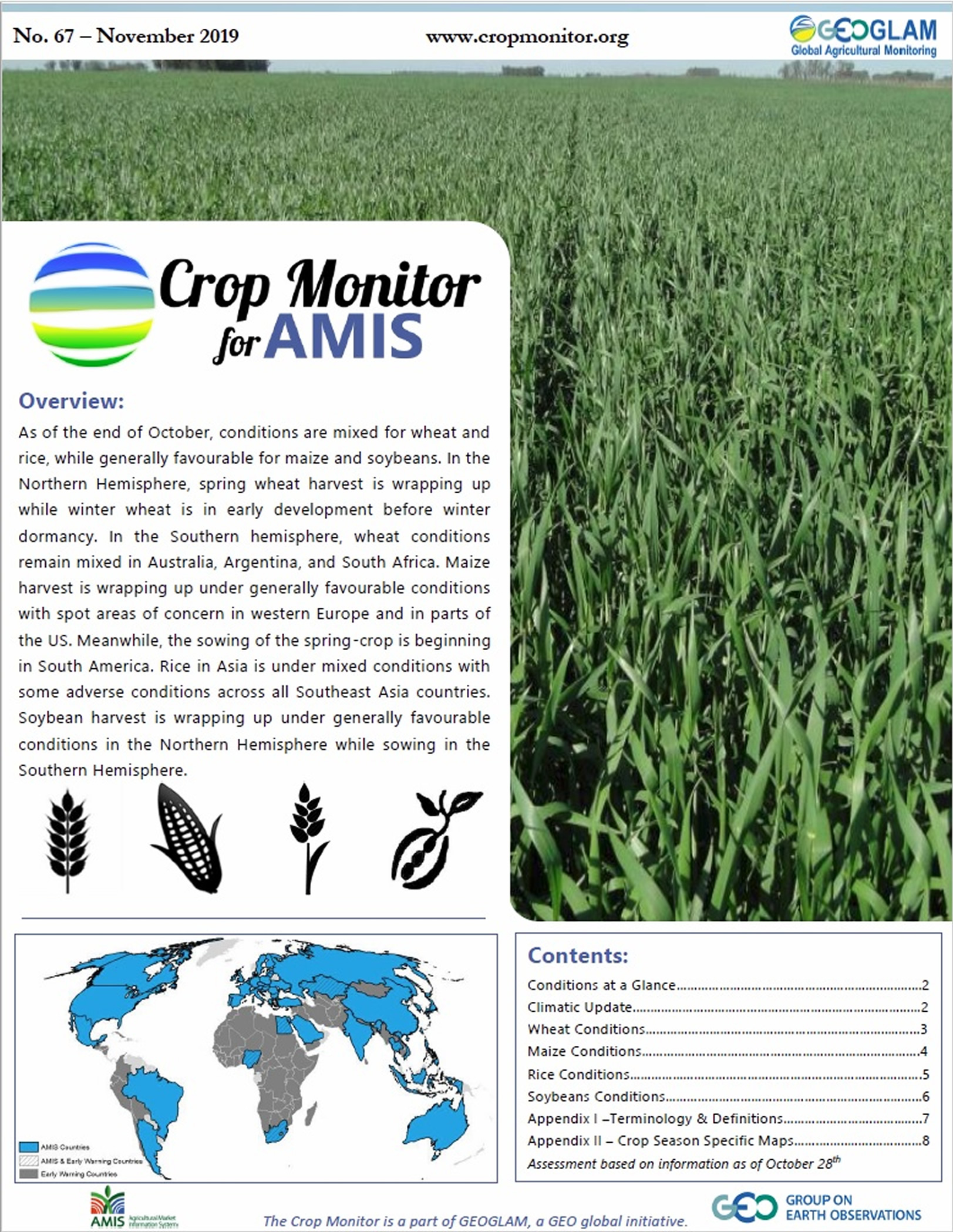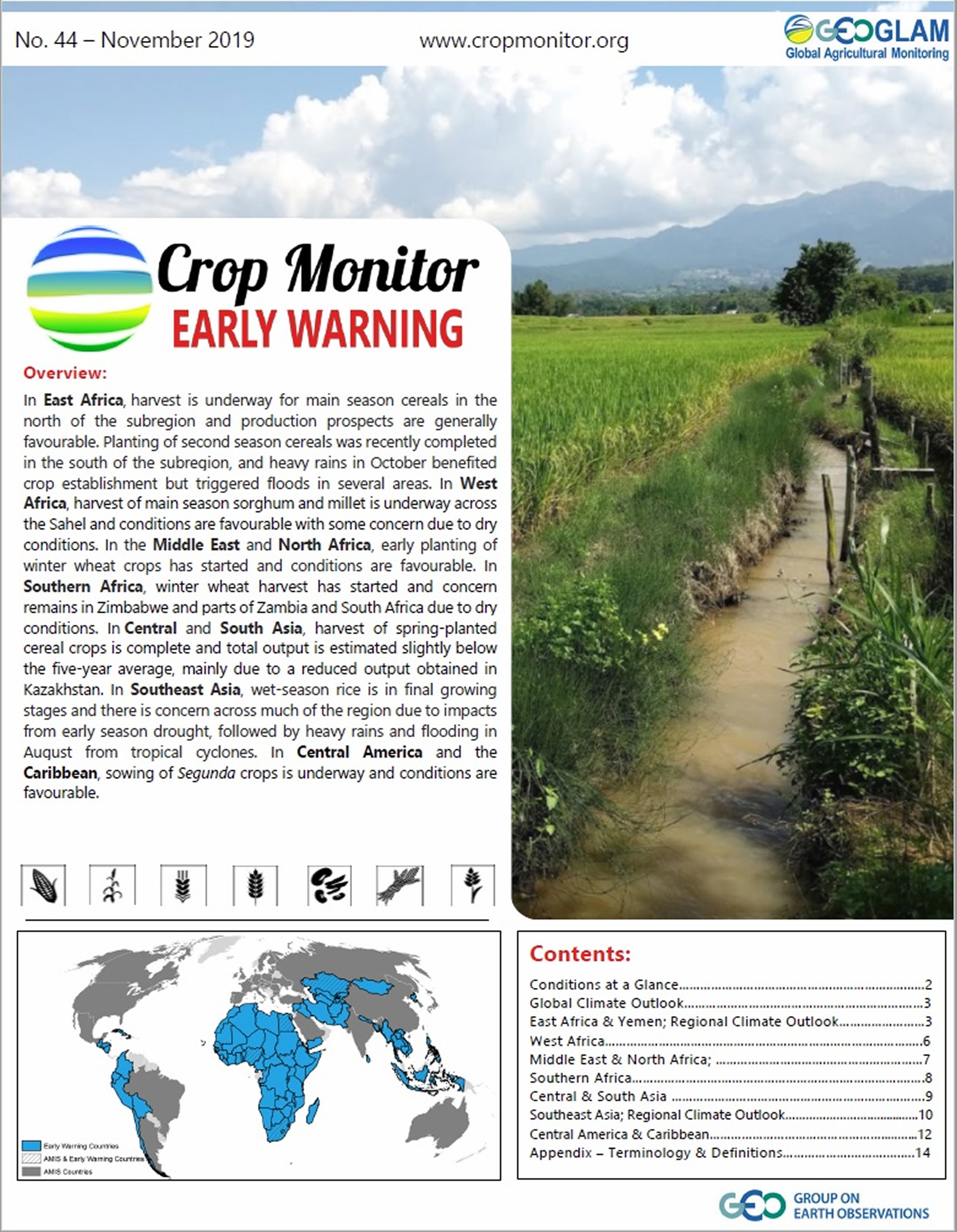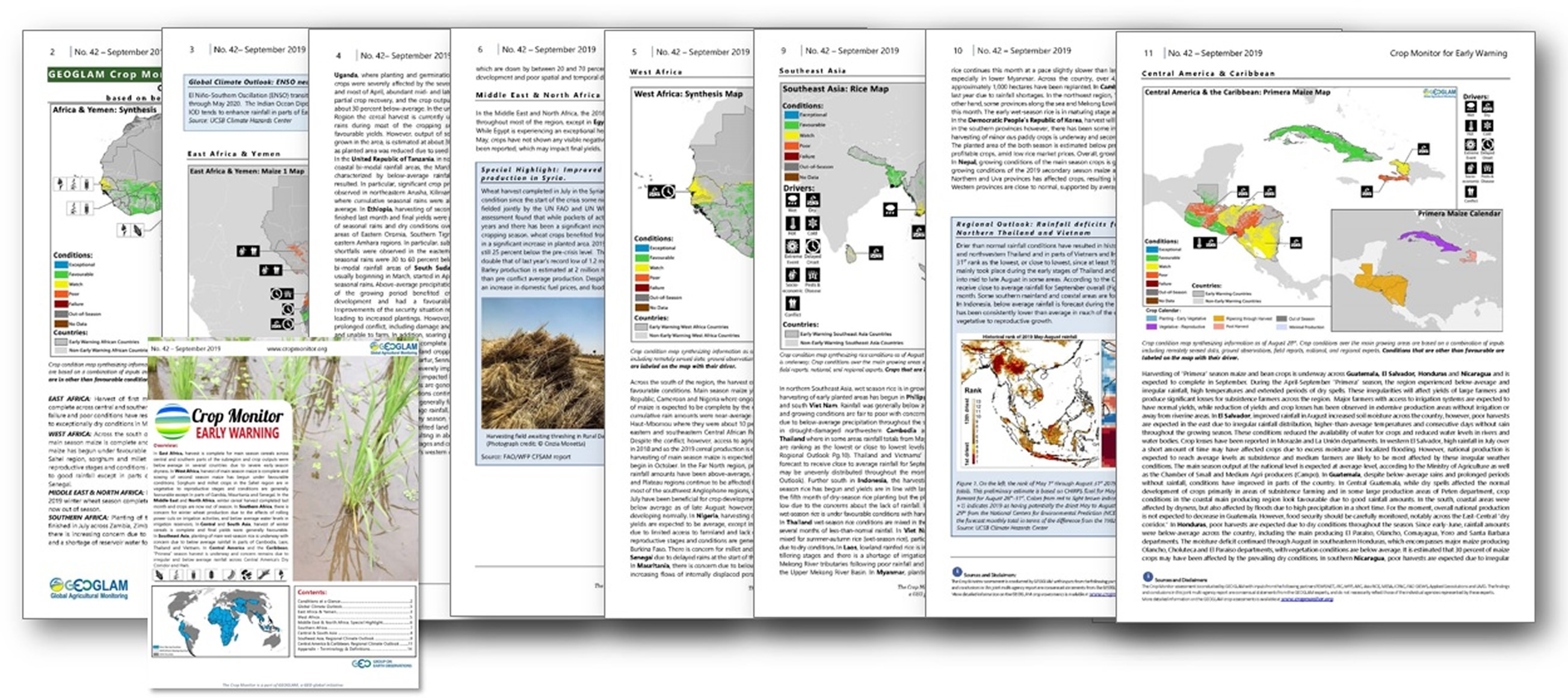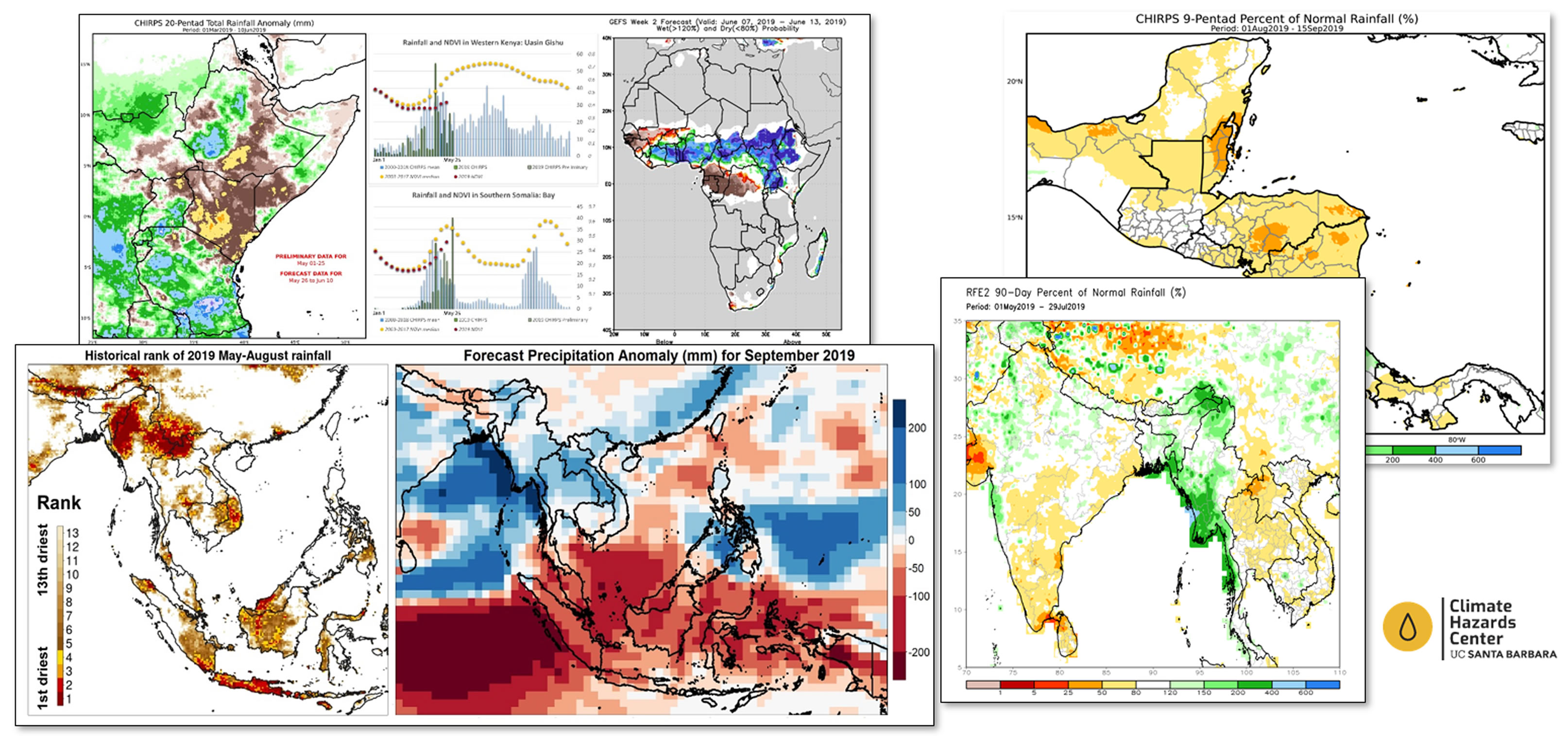About the Reports
Crop Monitor for AMIS and Early Warning reports
The Crop Monitor for AMIS and Early Warning reports are created under a common methodology and share a similar structure. The monthly reports are issued with the support of the respective partners, which contribute to them and reflect a consensus of the community of practice with regard to the conditions and drivers in the area of interest.


The reports consist of several key components: text, maps, pie charts, and climate outlooks. Text provides brief overviews of the conditions of the observed crops, stratified by crop (AMIS) or region (Early Warning). Maps provide a spatially explicit indication of crop condition and the drivers of crop conditions, masked by the average planted area of the respective crop or croplands. A synthesis map indicates the condition of all crops in one map, while individual crop maps provide conditions with respect to individual crops and planting seasons. Pie charts indicate the crop conditions globally (AMIS) or regionally (Early Warning) with respect to individual crop production. For more information on the maps and pie charts, please see the graphical products page. Additionally, the reports contain global and regional climatic outlooks that examine forecast conditions and how those relate to on the ground conditions.

Special Reports
In addition to monthly Crop Monitor reports, in-depth mid-month Special Reports are published by the Crop Monitor community in response to developing situations that may impact crop conditions, rapidly changing conditions on the ground, or new climatic outlooks that provide key insight on an upcoming cropping season. Special reports go in-depth on current conditions providing additional analysis and updates to what is included in the full monthly report including remote sensing analysis and products, updated forecasts, field reports, and market and price analysis where available.
Crop Monitor Special reports were developed in response to a request from UN OCHA in February 2018 during the early season drought in Southern Africa affecting the 2017/2018 main cropping season. The request was for the continuation and doubling down of in-season monitoring efforts as provided by the Crop Monitor and for the provision of more detailed and frequent assessments at key parts of the season and in the face of developing situations. Since February 2019, the CM community has initiated the Special Reports as a mechanism to respond to developing cropping concerns and provide early warning and analysis to decision-makers.


